Tips, Tricks, and Essential Knowledge

Boondocking offer a unique way to experience the great outdoors, providing freedom, flexibility, and the opportunity to connect with nature. By camping for free or boondocking, you can save money and avoid crowded campgrounds, giving you a more authentic and immersive adventure. Escape the crowds and immerse yourself in nature with boondocking, a unique way to experience the great outdoors. Boondocking, also known as free RV camping, allows you to save money and enjoy the peace and solitude of undeveloped campsites. Explore lesser-known destinations and forge a deeper connection with the wilderness, all while following Leave No Trace principles and practicing good boondocking etiquette.

Boondocking in National Parks
While opportunities for boondocking within National Parks are generally limited due to established campgrounds and stricter regulations, some parks do allow for dispersed camping in designated areas.
Finding Allowed Areas:
- It’s crucial to thoroughly research the specific National Park you plan to visit. Park websites and visitor centers will have information on designated boondocking areas, permitting requirements, and specific rules you must follow.
- Utilize resources like the National Park Service website (https://www.nps.gov/) and apps to locate boondocking zones within parks.
National Parks with Boondocking Options (with Caveats):
- Big Bend National Park: Offers vast opportunities for remote boondocking with stunning desert landscapes and incredible stargazing. However, be prepared for limited amenities and long distances between designated campsites.
- Death Valley National Park: Embrace the unique beauty of the desert with boondocking options in Death Valley. Remember, scorching temperatures and lack of services necessitate careful planning and self-sufficiency.
- Grand Staircase-Escalante National Monument (BLM-managed): This sprawling monument offers a variety of dispersed camping opportunities with breathtaking canyons and geological formations. Note that most boondocking locations are remote and require high-clearance vehicles.
Essential Preparation for National Park Boondocking:
- Be prepared for limited amenities and services like water, restrooms, and trash disposal. Pack enough supplies (food, water) for your entire stay, and plan for proper waste disposal methods.
- Protecting these precious landscapes is essential. Always practice Leave No Trace principles to minimize your environmental impact and leave your campsite cleaner than you found it.
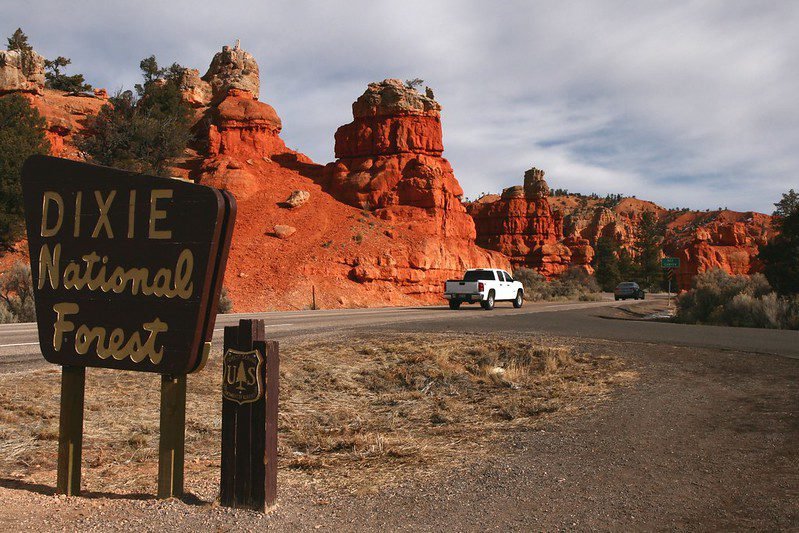
Boondocking in National Forests: A Paradise for Free Camping
National Forests are a boondocker’s dream, offering some of the most expansive opportunities for free, dispersed camping in the US. Imagine waking up to the whispers of pines or the crash of waves against a secluded lakeshore – all without the constraints of established campgrounds. However, with freedom comes responsibility. Here’s your guide to navigating the wonders and regulations of National Forest boondocking:
Understanding National Forest Camping Policies:
- Dispersed camping, the hallmark of boondocking, is often permitted within National Forests. However, regulations can vary between forests, so research is key. The official U.S. Forest Service website ([invalid URL removed]) provides detailed information on each National Forest’s camping policies and restrictions.
- Ranger stations are your friends! Contact them directly for up-to-date information on specific dispersed camping areas, fire restrictions, and any permits you might need.
Top National Forests for Secluded Camping:
- Coconino National Forest (Arizona): Immerse yourself in the otherworldly beauty of the Colorado Plateau. From the vibrant red rocks of Sedona to the ponderosa pine forests of the Mogollon Rim, Coconino offers diverse landscapes and ample dispersed camping opportunities.
- Inyo National Forest (California): Carve your own path through the majestic Sierra Nevada mountains. Inyo National Forest boasts towering granite peaks, crystal-clear lakes, and iconic landmarks like Yosemite Valley (which has designated campgrounds, not boondocking). With careful planning, you can find solitude near ancient sequoia groves or dramatic volcanic landscapes.
- Pisgah National Forest (North Carolina): Escape to the lush greenery of the Appalachian Mountains. Pisgah National Forest offers a variety of dispersed camping options, from the rolling Blue Ridge Parkway to hidden waterfalls and scenic overlooks. Be sure to pack for cooler temperatures and potentially unpredictable mountain weather.
Tips for a Smooth National Forest Boondocking Experience:
- Tread Lightly: National Forests are precious ecosystems. Choose previously used campsites whenever possible to minimize your impact on the environment. Leave No Trace principles are essential – pack out all trash, minimize campfire impact, and respect wildlife habitats.
- Embrace the Elements: National Forests offer diverse landscapes, but weather can be unpredictable. Be prepared for changing conditions by packing appropriate clothing, shelter, and gear. Research fire restrictions in advance, as they can affect campfires and cooking methods.
By following these tips and respecting the National Forest environment, you can unlock a world of free, secluded camping adventures. Remember, a little planning goes a long way in ensuring a safe and enjoyable boondocking experience.
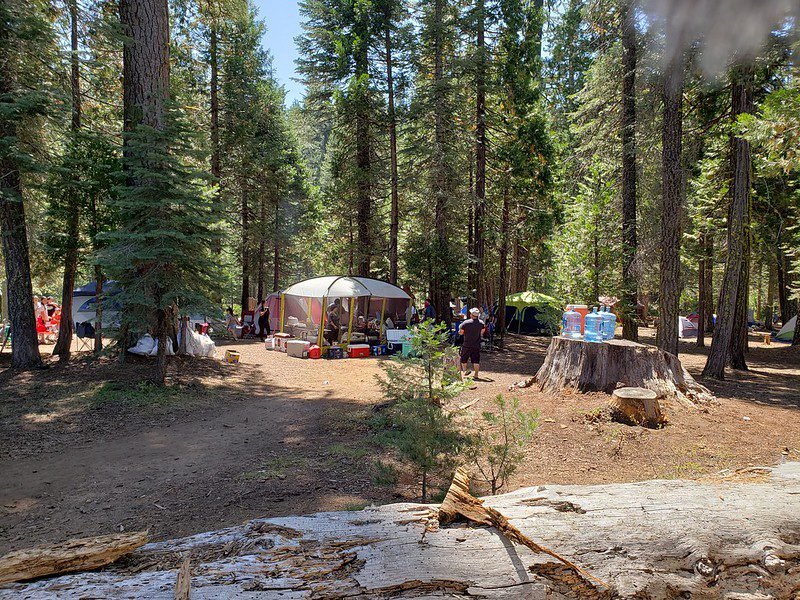
Demystifying Backcountry and Dispersed Camping
While both backcountry and dispersed camping offer the allure of escaping the crowds and immersing yourself in nature, there are key distinctions between these terms. Let’s untangle the differences and guide you towards your ideal wilderness adventure:
-
Backcountry Camping: Embark on a true wilderness expedition. Backcountry camping typically involves venturing deep into remote areas, often requiring a hike or off-road trek to reach your campsite. Solitude and pristine landscapes are the rewards, but be prepared for a self-sufficient experience with limited amenities (or none at all). Permits are usually required, and navigation skills are crucial.
-
Dispersed Camping: Enjoy the freedom of camping outside established campgrounds without venturing into the deep wilderness. Dispersed camping allows you to set up camp in designated areas within National Forests, BLM land, and sometimes even near bodies of water. You’ll likely have some neighbors, but the sites are typically more spaced out than campgrounds, offering a taste of seclusion with some basic amenities like fire rings (check for restrictions) or vault toilets (availability varies).
Finding Your Perfect Spot:
No matter your preference, locating your ideal campsite involves some research:
- Maps and Guidebooks: Utilize detailed topographical maps and guidebooks specifically focused on backcountry and dispersed camping. These resources often highlight designated camping areas, access points, and potential challenges.
- Online Resources: Several websites and mobile apps like Campendium (https://www.blm.gov/programs/recreation/camping) and Freecampsites.net (https://freecampsites.net/) provide valuable information on dispersed camping locations, user reviews, and sometimes even virtual campsite tours.
- Ranger Stations: Local ranger stations are your best source of up-to-date information on specific dispersed camping areas, fire restrictions, permit requirements, and any seasonal closures.
Tips for a Thriving Backcountry or Dispersed Camping Experience:
- Planning is Paramount: Backcountry and dispersed camping demand thorough planning. Research the area, understand weather patterns, pack essential gear based on your chosen location, and leave a detailed itinerary with a trusted contact.
- Embrace Self-Sufficiency: Be prepared to handle basic needs independently. Pack adequate food, water purification tablets or a filter, a first-aid kit, and proper shelter.
- Leave No Trace: Respect the environment by following Leave No Trace principles. Minimize your impact, dispose of waste properly, and leave your campsite cleaner than you found it.
By understanding the distinctions between backcountry and dispersed camping, along with these valuable tips, you’re well on your way to a rewarding and unforgettable wilderness adventure.
Unveiling the Secrets of Free Campgrounds and Parking Areas
Free camping isn’t just about saving money; it’s about unlocking a world of adventure under the open sky. Let’s explore the treasure trove of public lands offering free campsites and uncover some clever tricks for overnight parking:
Public Lands: Your Ticket to Free Camping:
- National Forests: As mentioned earlier, National Forests are havens for dispersed camping, allowing you to set up camp outside designated campgrounds for free. Remember to research specific regulations and restrictions for each forest.
- BLM Land: Managed by the Bureau of Land Management, BLM land offers a vast network of free campsites across the country. Public lands often boast stunning landscapes, from rugged deserts to lush forests, making your free camping experience even more rewarding.
- Wildlife Management Areas (WMAs): Some Wildlife Management Areas (WMAs) allow for free camping, with the bonus of potential wildlife encounters. Be sure to research WMA regulations, as some prioritize wildlife habitats and may have restrictions on camping locations or durations.
Finding the Perfect Free Campground:
While free camping locations aren’t always meticulously marked, some research can lead you to your perfect spot. Here are some helpful tools:
- Online Resources: Websites like Freecampsites.net (https://freecampsites.net/) and Campendium (https://www.campendium.com/free-camping) compile user-generated information on free campsites across the US, including reviews and photos.
- Mobile Apps: Download apps like iOverlander or Gaia GPS that provide detailed maps with designated free camping areas on public lands.
- Ranger Stations: Don’t underestimate the power of a friendly conversation with a ranger at your local ranger station. They can provide insider knowledge on free campsites within their jurisdiction and offer valuable advice on trail conditions and local attractions.
The Art of Overnight Parking:
While not technically camping, strategic overnight parking can be a lifesaver on a road trip. Here are a few things to keep in mind:
- Retail Giants with a Heart (Sometimes): Some large retail stores like Walmart or Cracker Barrel allow overnight parking in designated areas with permission from the manager. It’s always best to call ahead and confirm their policy.
- Rest Areas and Truck Stops: Certain rest areas and truck stops may permit overnight parking, but facilities and amenities can vary greatly. Check signage or inquire with the staff for specific regulations.
Camping Etiquette for Free Spaces:
Free camping comes with the responsibility of respecting the environment and fellow adventurers. Here are some golden rules:
- Respect the Space: Keep noise levels down, especially at night. Pack out all trash and leave your campsite cleaner than you found it.
- Be Mindful of Others: Free campsites often operate on a first-come, first-served basis. Be courteous to other campers and avoid sprawling out or monopolizing prime locations.
- Embrace Leave No Trace Principles: Minimize your impact on the environment by following Leave No Trace principles. This includes using established fire rings (where permitted), properly disposing of waste, and respecting wildlife habitats.
By following these tips and venturing out with a sense of exploration, you can unlock a world of free camping possibilities. Remember, a little planning and responsible stewardship go a long way in ensuring a memorable and sustainable free camping experience.
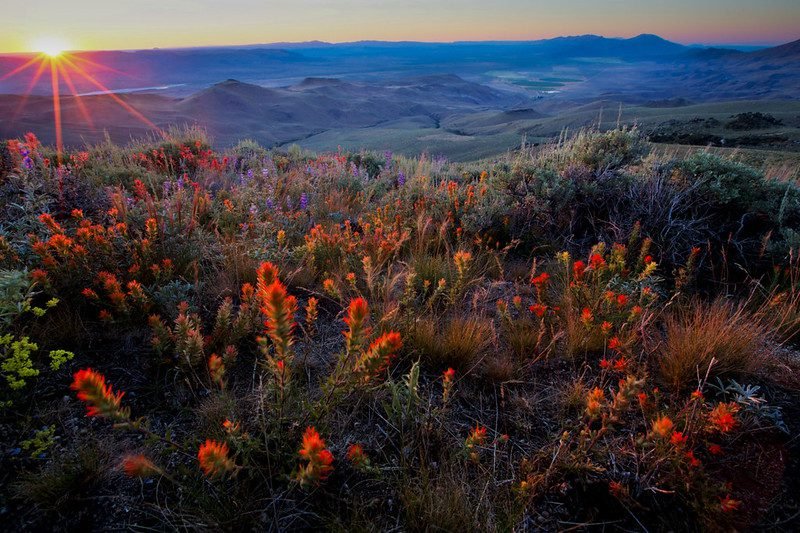
Boondocking on BLM Land
The Bureau of Land Management (BLM) oversees a vast network of public lands in the United States, encompassing millions of acres ripe for boondocking exploration. Imagine stargazing under endless skies in a remote desert landscape or waking up to the crashing waves along a secluded coastline – all without the constraints of established campgrounds. BLM land offers a boondocker’s paradise, but with vastness comes responsibility. Here’s your guide to unlocking the wonders of BLM boondocking:
BLM Land: A Treasure Trove of Free Camping:
BLM land is a treasure trove for dispersed camping, the heart of boondocking. Unlike designated campgrounds, there are usually no amenities like restrooms, water hookups, or picnic tables. However, the freedom and solitude you gain are unmatched.
Top BLM Boondocking Destinations:
- Alabama Hills (California): Embrace the rugged beauty of the Eastern Sierra Nevada. The Alabama Hills, with their otherworldly rock formations, have been a backdrop for countless Hollywood movies and offer dispersed camping opportunities for a truly unique boondocking experience.
- Quartzsite (Arizona): Immerse yourself in the vibrant desert community of Quartzsite, a haven for winter RVers and boondockers. BLM land surrounding Quartzsite offers stunning desert landscapes and a strong sense of community, making it a popular winter escape.
- San Juan Islands (Washington): Island hop through the Pacific Northwest on a boondocking adventure in the San Juan Islands. BLM-managed campsites on some islands offer breathtaking ocean views and opportunities for kayaking, hiking, and exploring charming island towns.
Essential Tips for BLM Boondocking:
- Tread Lightly: Remember, you’re a guest in a fragile ecosystem. Choose established campsites whenever possible to minimize your impact. Always follow Leave No Trace principles by packing out all trash, respecting wildlife, and using fire rings responsibly (where permitted).
- Embrace Self-Sufficiency: Unlike developed campgrounds, BLM land offers limited amenities. Pack enough supplies (water, food) for your entire stay and have a plan for waste disposal. Be prepared for varying weather conditions, as remoteness can mean limited access to services.
- Know Before You Go: BLM land is vast and regulations can vary by location. Always research the specific BLM area you plan to visit. BLM websites and local ranger stations can provide information on designated camping areas, fire restrictions, and any permits you might need.
By following these tips and respecting the delicate balance of BLM land, you can unlock a world of breathtaking boondocking experiences. Remember, responsible use ensures this unique camping opportunity remains available for generations to come.

Boondocking at Wildlife Management Areas (WMAs)
Wildlife Management Areas (WMAs) are sanctuaries dedicated to conserving wildlife and their habitats. While their primary focus isn’t camping, some WMAs do allow for dispersed camping, offering a unique boondocking experience. Imagine waking up to the sounds of nature and potentially spotting local wildlife in their natural environment – all for free! However, with this privilege comes the responsibility to be a respectful guest. Here’s your guide to navigating the wonders and regulations of WMA boondocking:
A Different Kind of Boondocking:
- WMAs prioritize wildlife habitats. Camping opportunities are often limited and may come with specific restrictions on location, duration, or noise levels to minimize disruption to wildlife.
Top States for WMA Boondocking:
- Florida: Sunshine State seekers can find boondocking opportunities in WMAs like DuPuis Management Area near West Palm Beach, offering wildlife viewing and easy access to beaches.
- Texas: The Lone Star State boasts WMAs like the Chaparral WMA, known for its abundance of white-tailed deer and providing scenic boondocking opportunities near lakes and rivers.
- Georgia: Explore the diverse ecosystems of Georgia WMAs like Richard B. Russell State Park WMA, which offers boondocking options near lakes and opportunities for spotting birds and other wildlife.
Important Considerations for WMA Boondocking:
- Respect the Wildlife: Remember, you’re a visitor in their home. Follow Leave No Trace principles to minimize your impact. Keep noise levels down, avoid disturbing wildlife habitats, and dispose of waste properly.
- Adhere to WMA Regulations: WMAs have specific rules and regulations regarding camping. Research the specific WMA you plan to visit to understand limitations on location, duration, fire restrictions, and any permits required.
- Limited Amenities: Unlike campgrounds, WMAs typically offer minimal amenities, if any. Pack accordingly and be prepared for self-sufficiency regarding water, food, and waste disposal.
Finding Free RV Camping Online:
Planning a boondocking adventure starts with research. Here are some helpful online resources to find free RV camping opportunities:
- Freecampsites.net ([https://freecampsites.net/]) : This user-generated website provides a vast database of free campsites across the US, including WMAs, BLM land, and dispersed camping locations on National Forests. Read reviews from fellow RVers and access photos to get a feel for the location.
- Campendium ([https://www.campendium.com/]) : Another user-driven resource, Campendium allows you to search for free campsites by state, amenity, or activity. Find reviews, ratings, and photos to help choose the perfect WMA boondocking spot for your needs.
- Bureau of Land Management (BLM) Website ([https://www.blm.gov/programs/recreation/camping]) : Explore BLM-managed land for dispersed camping opportunities. While the website doesn’t specifically highlight WMAs, it allows you to search for free camping locations by state and provides information on regulations and permitting requirements.
By following these tips and respecting the unique environment of WMAs, you can experience a truly rewarding boondocking adventure. Remember, responsible use ensures WMAs remain havens for wildlife and provide free camping opportunities for generations to come.
Essential Tips for Security and Peace of Mind
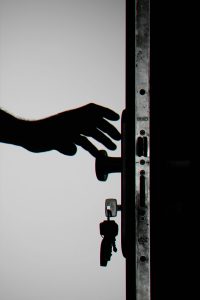
Choosing Your Boondock Oasis:
- Location, Location, Location: Select a well-established campsite whenever possible. Look for areas with signs of previous use and avoid overly isolated locations, especially for first-time boondockers.
- Trust Your Gut: If something feels off about a location, don’t hesitate to move on. Choose a spot that feels safe and comfortable for you.
Securing Your RV:
- Fortress on Wheels: Lock all doors and windows securely before leaving your RV. Consider using a steering wheel lock or wheel lock for added security.
- Invest in Protection: Installing a security system with door and window sensors can deter potential theft and provide peace of mind.
- Out of Sight, Out of Mind: Don’t leave valuables in plain sight. Store them away in secure compartments or lockboxes within your RV.
- Absence Doesn’t Make You Safer: Avoid advertising your absence by leaving awnings extended or outdoor furniture set up.
Photo by George Becker
Wildlife Encounters:
- Respectful Coexistence: Wildlife is a natural part of the boondocking experience. Learn about the common animals in your chosen area and educate yourself on their behavior.
- Food Fortress: Secure food and anything with strong scents (like toiletries) properly. Utilize airtight containers and critter-proof storage solutions to deter curious animals.
- Maintaining Distance: Observe wildlife from a safe distance and avoid approaching them. Remember, you’re a guest in their habitat.
- Be Prepared: Carry bear spray or other deterrents (depending on your location) as a last resort if necessary. Always follow proper usage guidelines.
Additional Safety Tips:
- First Aid Essentials: Pack a well-stocked first-aid kit to handle minor injuries or emergencies.
- Emergency Plan: Have a communication plan in place for emergencies. Let someone know your location and estimated return date, and consider carrying a satellite communicator if venturing into remote areas with limited cell service.
By following these safety and security practices, you can transform your boondocking adventure into a relaxing and unforgettable experience. Remember, a little preparation goes a long way in ensuring a peaceful and enjoyable time amidst the beauty of nature.
Boondocking Essentials and Gear
Boondocking unlocks a world of off-grid exploration, but venturing away from established campgrounds necessitates thoughtful packing. Here’s your guide to ensuring you have everything you need for a smooth and comfortable boondocking adventure:
The Boondocking Must-Haves:
- Water on Demand: A reliable water source is essential. This could be a refillable jug, a built-in RV water tank, or a portable water bladder depending on your setup. Consider the size of your RV and the duration of your trip when
determining your water needs.
- Waste Management: Portable waste tanks are crucial for boondocking. Empty them properly at designated dump stations and follow local regulations for disposal.
- Harnessing the Power of the Sun (or Generator): Boondocking often means limited or no electrical hookups. Solar panels are a great way to generate your own power, while generators provide an alternative for cloudy days or high-power needs. Choose the option that best suits your energy consumption and budget.
- Level Up Your Campsite: Leveling blocks are essential for ensuring your RV sits level, which is important for proper operation of your refrigerator and other appliances.
- Be Prepared for Anything: Pack a basic toolkit for minor repairs and maintenance needs. You don’t need to be a mechanic, but having a few essential tools can resolve unexpected issues and keep your trip rolling.
Boondocking Upgrades for Comfort and Efficiency:
- Battery Boost: Consider adding extra RV batteries to increase your overall power storage capacity, especially if you plan on using appliances that draw a lot of power.
- Solar Powerhouse: Upgrading your solar panel system can significantly increase your off-grid power generation. This is a great option for extended boondocking trips or if you rely heavily on electronic devices.
- Nature’s Call, Naturally: Composting toilets offer an eco-friendly alternative to traditional RV toilets, reducing reliance on black water tanks. Research and choose a composting toilet system that suits your needs and comfort level.
- Beat the Elements: Investing in improved insulation for your RV can help regulate temperature, especially in extreme weather conditions. This can enhance comfort and potentially reduce reliance on your heating or air conditioning system.
Packing Smart for Boondocking Bliss:
- Checklist Champion: Create a comprehensive checklist to ensure you don’t forget any essentials. Include items specific to boondocking, like extra water hoses, a surge protector for generator use, and a camp shovel.
- Multi-tasking Marvels: Prioritize multifunctional gear that serves multiple purposes. A spork combines a spoon, fork, and knife, saving space and weight.
- Storage Savvy: Utilize bins, organizers, and drawer dividers to maximize storage space and keep your RV clutter-free. Labeling containers makes finding things easier.
- The Art of Letting Go: Regularly evaluate your gear and ruthlessly eliminate unused items. Less clutter translates to a more organized and efficient boondocking experience.
By packing the right essentials, considering smart upgrades, and adopting efficient organization techniques, you can transform your boondocking trip from a logistical challenge into an adventure filled with comfort and freedom. Remember, a little planning goes a long way in ensuring a successful and unforgettable boondocking experience.
Boondocking with Kids and Pets
- Pros: Educational experience, family bonding, unique adventure for everyone.
- Cons: Requires more planning and preparation, limited amenities can be challenging for kids and pets.
- Tips:
- Involve kids in planning, educate them on safety and wildlife.
- Bring age-appropriate entertainment and educational materials for kids.
- Ensure pet safety with a secure environment, shade, and water access.
- Keep pets leashed outside the RV and be aware of wildlife hazards.
- Create a comfortable living space, plan activities for everyone, and share responsibilities.
Boondocking Etiquette
- Respect fellow campers: Maintain distance, control noise, follow quiet hours.
- Protect the environment: Follow Leave No Trace principles, minimize impact.
- Minimize noise and light pollution: Use headphones, low-wattage directional lighting.
- Practice good communication: Talk to fellow boondockers, share resources, leave the site clean.
Troubleshooting the Unexpected
Even the most meticulously planned boondocking trip can encounter hurdles. Here’s your guide to navigating common challenges and ensuring a smooth and successful adventure:
Weathering the Storm:
- Be Weather Wise: Monitor weather forecasts closely and plan accordingly. Invest in durable, weather-resistant gear to handle unexpected downpours or chilly nights.
- Plan B is Your Friend: Have contingency plans in mind for adverse weather. This might involve relocating to a more sheltered campsite or adjusting your itinerary.
RV Repairs on the Road:
- DIY Toolkit: Pack a basic toolkit and familiarize yourself with minor RV repairs. Having spare parts like fuses or plumbing components can be a lifesaver.
- Help is a Call Away: Maintain a list of nearby RV repair shops and mobile technicians in case you encounter a more complex issue while boondocking.
Overcoming Obstacles with a Smile:
- Problem-Solving Prowess: Develop your problem-solving skills. Boondocking often requires resourcefulness and a can-do attitude.
- Flexibility is Key: Be prepared to adapt your plans based on unforeseen circumstances. Maintaining a flexible mindset is essential for a successful boondocking experience.
- The Boondocking Community: Don’t be afraid to reach out to fellow boondockers or online forums for advice and support. The boondocking community thrives on helping each other out.
Final Notes for Boondocking Bliss:
- Preparation is Power: Thorough preparation is the cornerstone of a successful boondocking adventure. Research your destination, pack appropriately, and anticipate potential challenges.
- Embrace the Unexpected: Maintain a sense of adventure and a positive attitude. Sometimes, the most memorable moments arise from unexpected encounters or overcoming obstacles.
- Share the Stoke: Embrace the boondocking community and share your experiences with others. Inspire others to discover the joys of free RV camping and the unique adventures that await off the beaten path.
By following these tips and approaching boondocking with a spirit of adventure and resourcefulness, you can transform any challenge into an opportunity for growth and create lasting memories on your off-grid escapades.
Resources
- Campendium (https://www.campendium.com): A comprehensive resource for finding RV camping and boondocking spots, with user reviews, photos, and detailed information on campgrounds and public lands.
- National Park Service (https://www.nps.gov): The official website of the U.S. National Park Service, providing information on park regulations, camping opportunities, and tips for boondocking in National Parks.
- U.S. Forest Service (https://www.fs.usda.gov): The official website of the U.S. Forest Service, offering information on National Forests, their camping policies, and tips for boondocking in these areas.
- Bureau of Land Management (https://www.blm.gov): The official website of the Bureau of Land Management, containing information on BLM lands, boondocking opportunities, and tips for camping on public lands.
- Leave No Trace Center for Outdoor Ethics (https://lnt.org): A non-profit organization dedicated to promoting responsible outdoor recreation, providing resources and guidelines for practicing Leave No Trace principles while boondocking and camping.


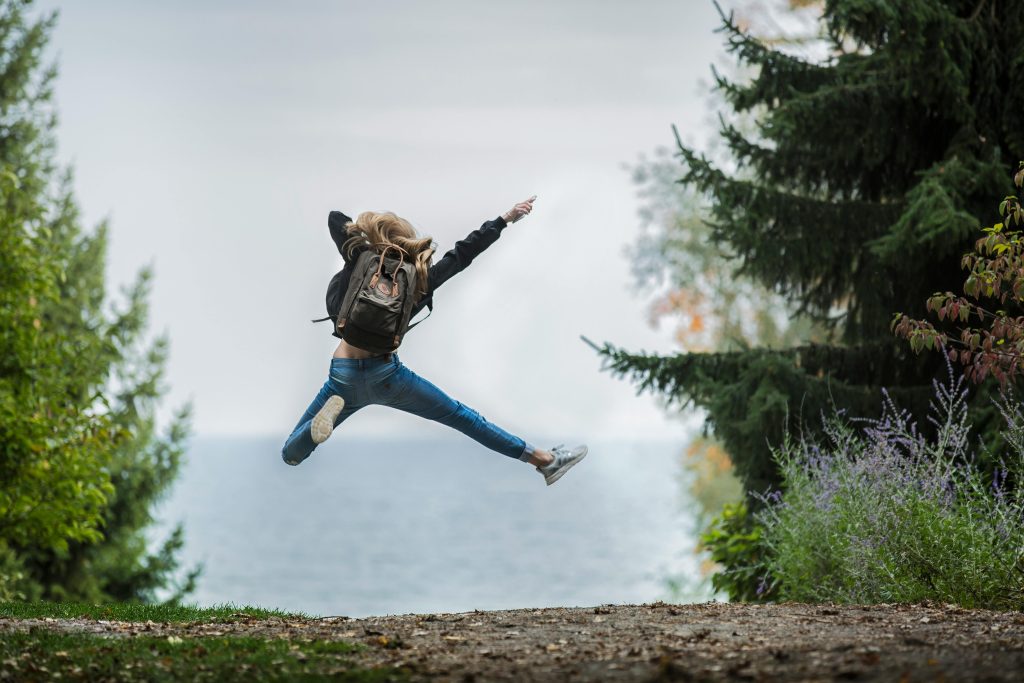
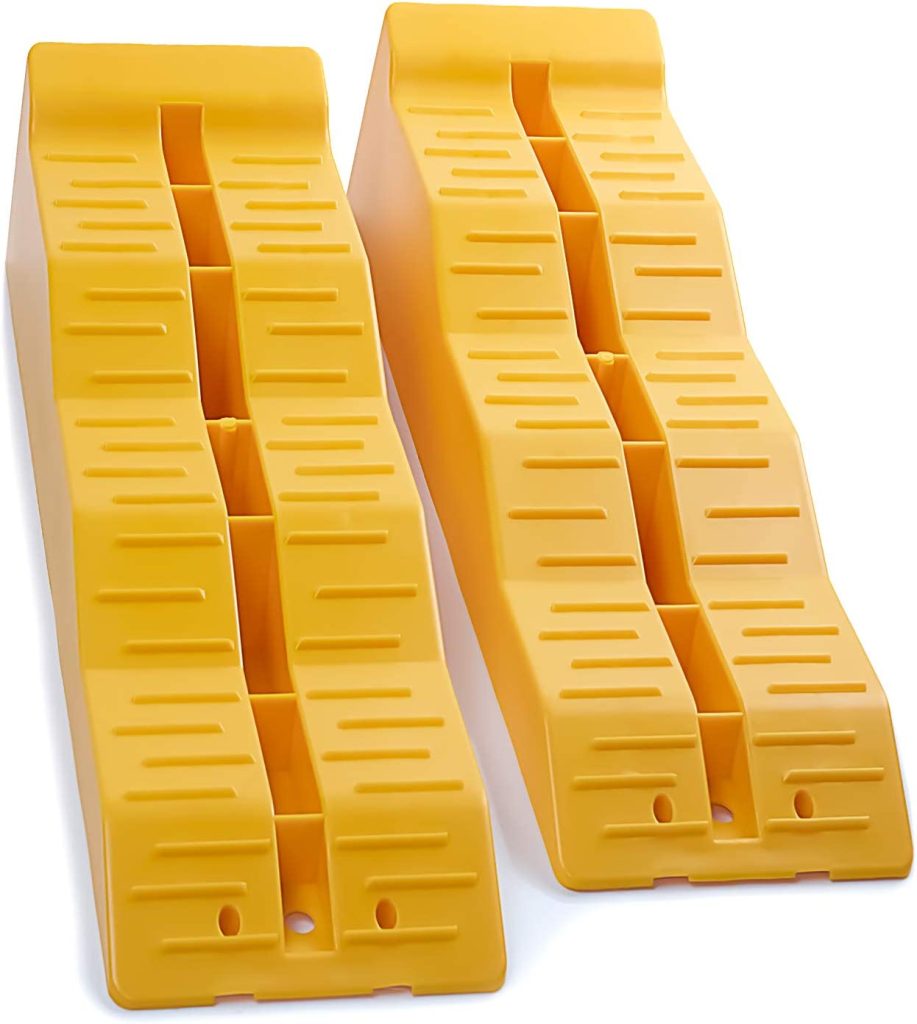 determining your water needs.
determining your water needs.